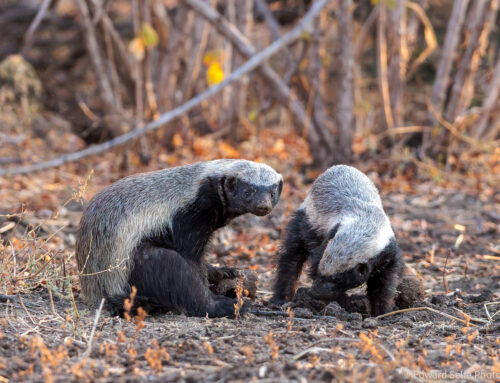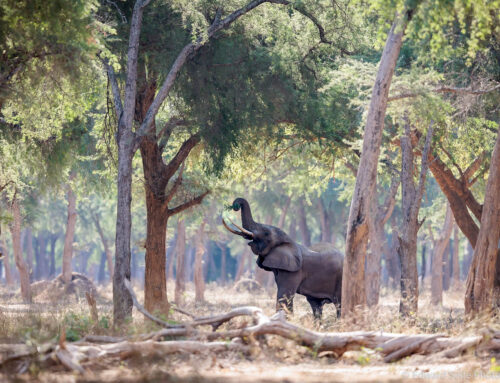Back in October, I led a trip to the Kafue National Park. This is the 4th time I have run my Kafue and Busanga Adventure, and I think it gets better each time! I was joined this time by 4 guests, all of whom had been to Zambia with me before (two of them twice!) but none had been to Kafue National Park. As with the previous 3 Kafue trips, the combination of the privacy of the area, the quality of the sightings and the diversity of habitats was thrilling and rewarding for us all.
The Luangwa is always famed for its sightings and for the incredible pace and regularity of encounters with its wildlife; it’s really true that barely a moment goes by without something coming along. The Kafue is somewhat different; the overwhelming impression on arrival is the size and scale of the place. Its vast grassland and forest habitats overwhelm the viewer and tent to give the impression of a vast emptiness; but pause and focus and one sees large quantities of game spread across the landscape. It simply takes time for eyes to adjust.
We flew from Lusaka, landing one hour later in Busanga Plains. The Plains airstrip is about 1 hour from our first destination, Busanga Bush Camp. We were met by Isaac Kalio, long term head guide at Wilderness Safaris in Busanga and most knowledgeable Kafue legend. I have led all my trips to Kafue alongside him and always been very grateful to have his insights and experience. So, as before, a summary of the tour, using images and captions:
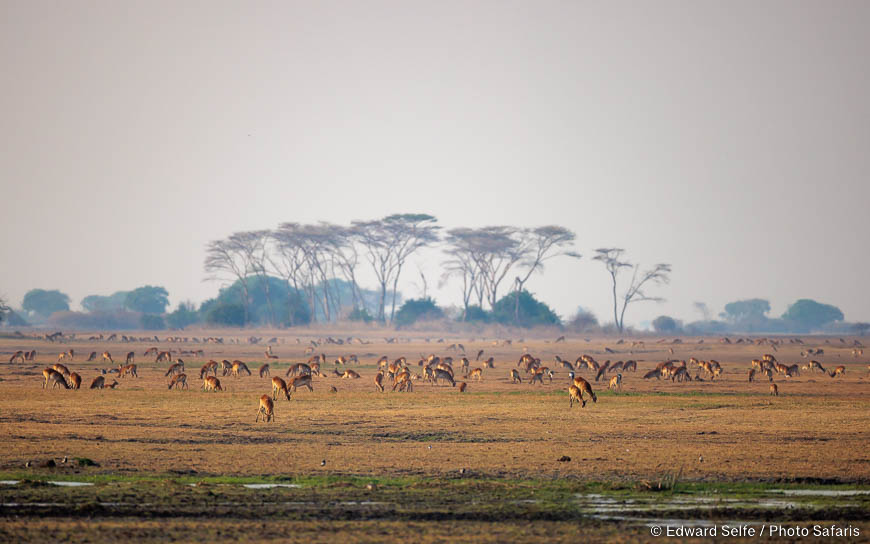
The Busanga Plains in the late dry season is quite a sight; thousands of red lechwe, stretching as far as the eye can see to the treeline on the far side of the drying channel. It takes time for your eyes to acclimatise to the type of careful scanning required to pick out, for example, the shape of the sleeping lioness among all the distant lechwe.
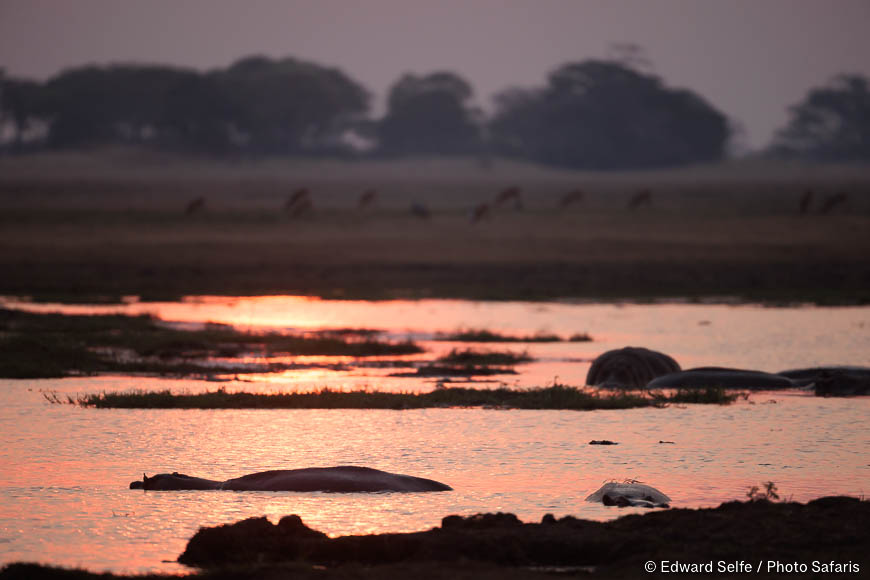
The sceneries of Busanga are beautiful, especially as the sun dips over the remaining water. This was a particularly dry year, after a series of previous dry years, so much of the plains are dusty and brown compared to the rich and verdant greens of the early part of the season. The hippos are increasingly squeezed into smaller and smaller puddles causing tensions and skirmishes.
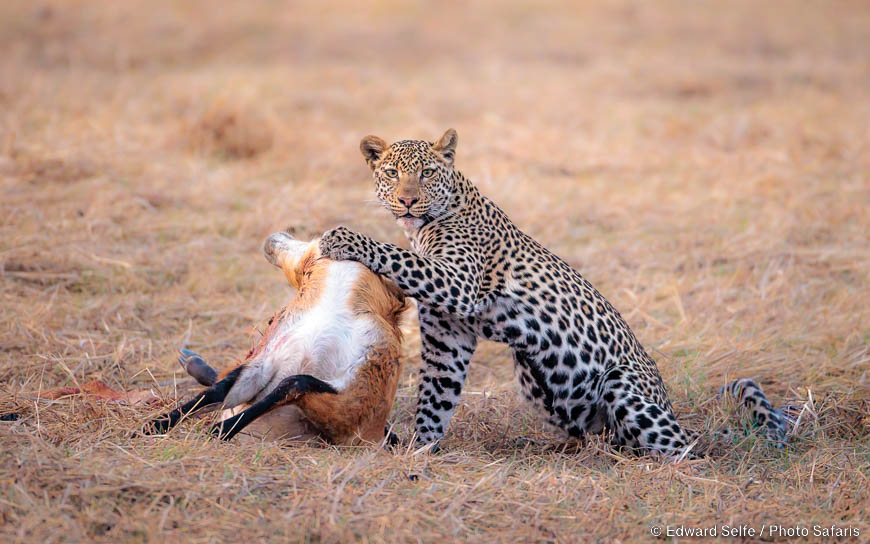
On our first night, we found a leopard who had recently killed a large lechwe ram. He was being barked at by two jackals who hoped to drive him from his prey. We watched briefly, but wanted not to add to his stress, so we left and planned to return first thing the next morning. We arrived when it was barely light; taking our time we approached him and watched him feed, capturing this epic moment as he laid claim to the prize!
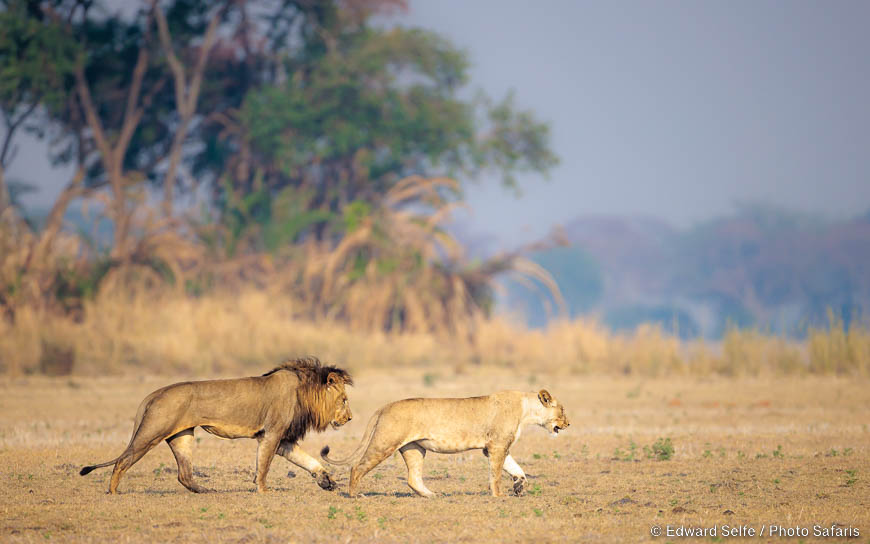
That same morning, we spent time with two males who are new to the area, and are courting the resident females.
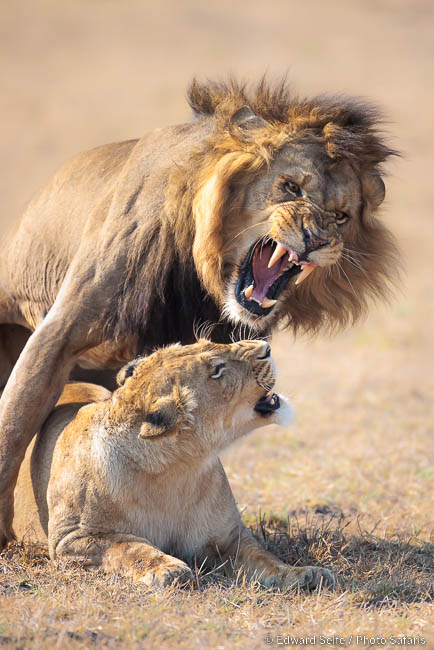
As always, the mating process is feisty. The female is young and inexperienced – and likely unable to bear cubs – but she seemed to know what to do!
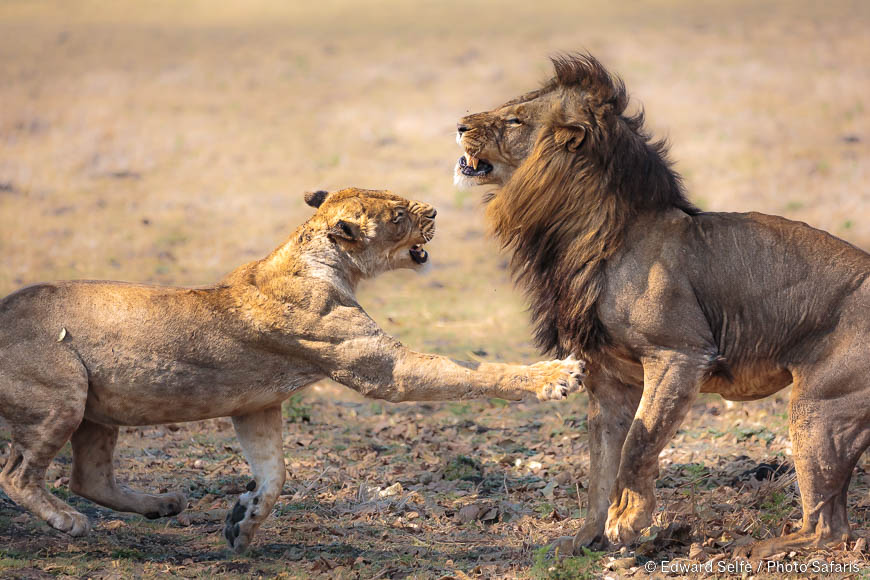
Even at her young age of less than 2 years, she knows how to rebut the over-amorous advances of a male who weighs twice what she does!
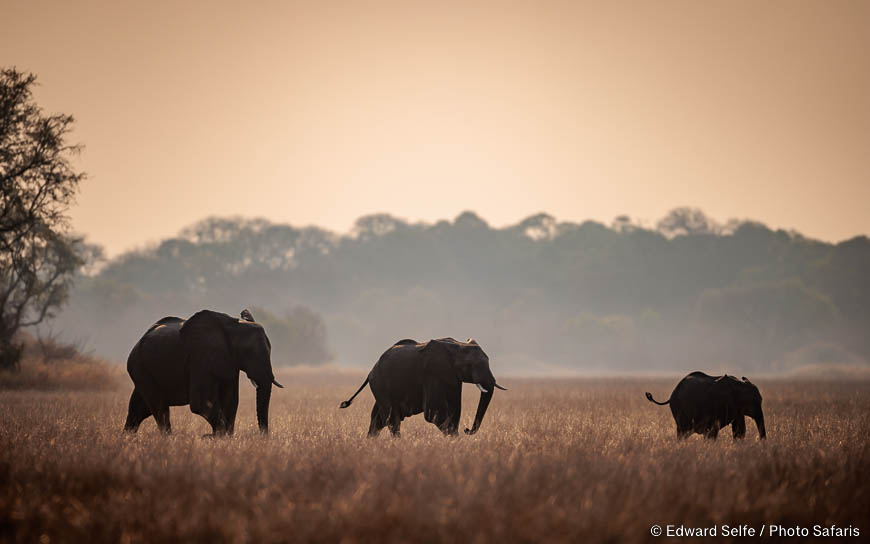
On the first afternoon, we had sat with elephants for a long time, hoping that they would emerge from the forested islands and head to the water. We wanted shots of them crossing the plains with the soft grass surroundings. It didn’t happen that day, but on day 2, we got exactly what we had hoped for!
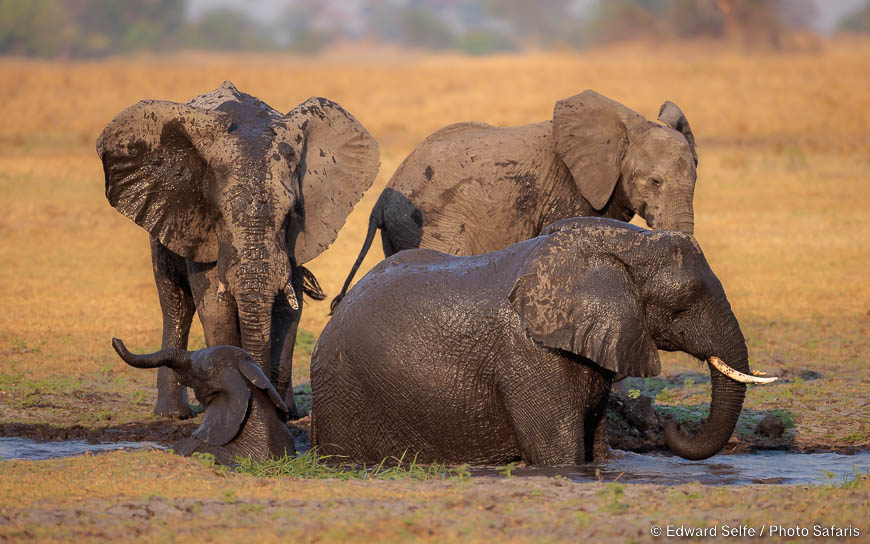
The herd moved to the muddy channel and started a wonderful celebratory mud-bath. I wondered why I was taking so many images of an event that I have seen so often and I realised that it is so rare to see this behaviour in the late afternoon when the light is so beautiful; most mud-baths happen in the middle of the day when it is hottest.
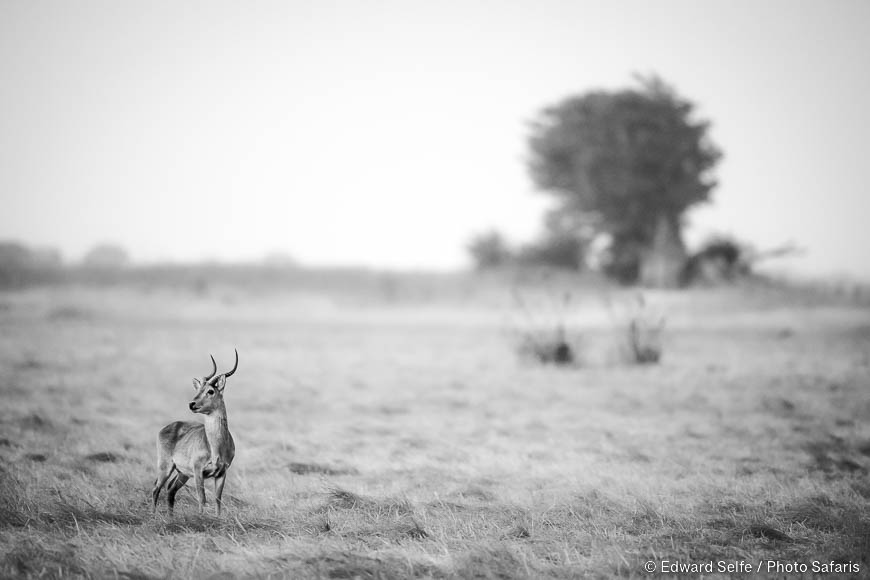
The Kafue’s sceneries are beautiful and varied. In the north, there are large grassy plains, where photographers can sit and compose using the subjects and the large canvas available…
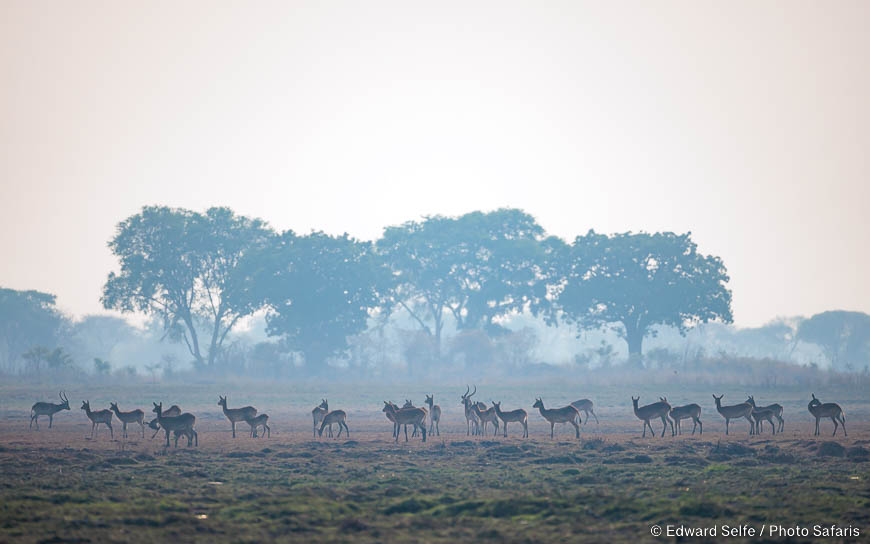
….or use the early blue light across the hazy floodplain to make the red lechwe stand out.
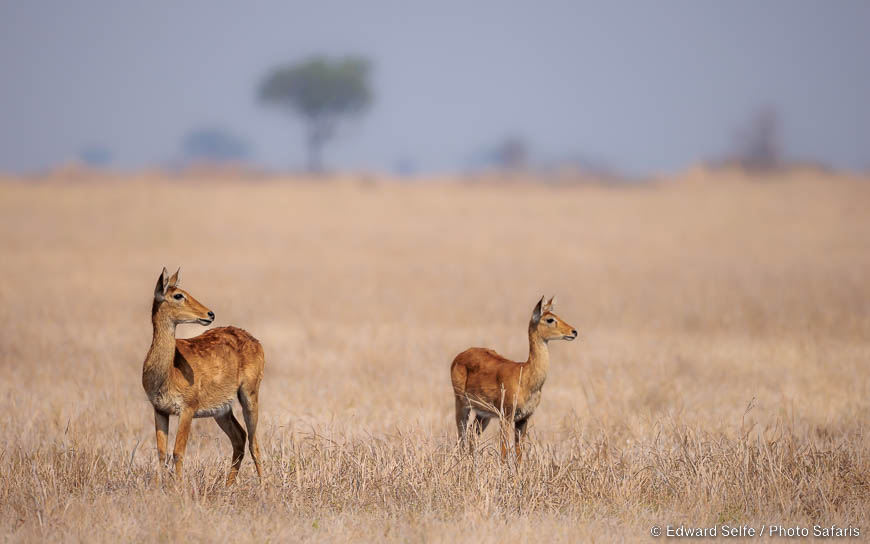
Close to the boundary of the park on the northern side, the swamps are bounded by very dry grassland, recalling the plains of east Africa more than the traditional Zambian landscapes.
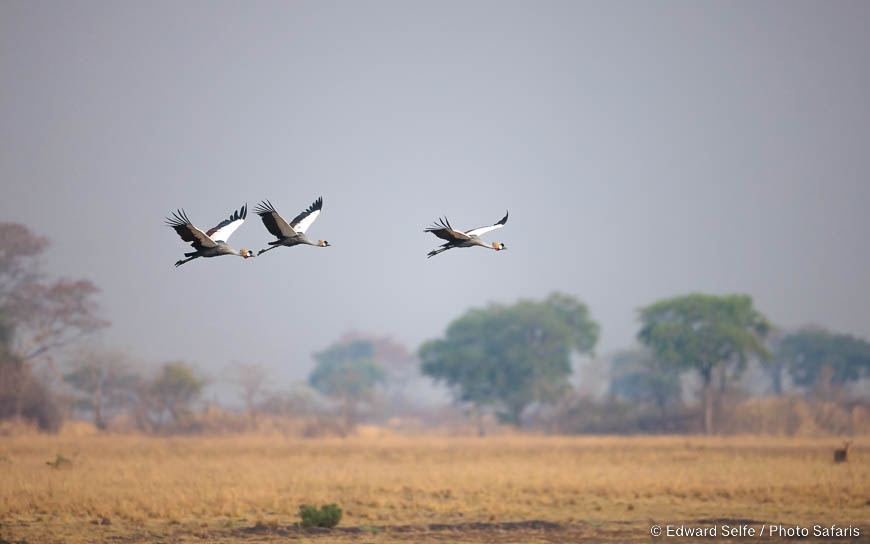
A perfect number (3) of crowned cranes flew across our bows one morning. Shooting a burst allows selection of the best image for background, wing angle and to make sure the birds don’t overlap.
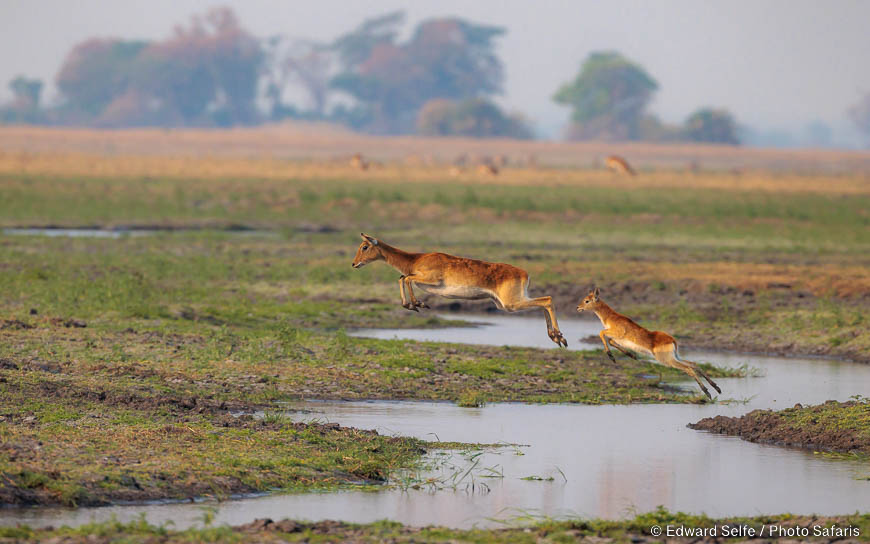
The channels are shrinking, almost by the day, so it is rarer to find herd of lechwe jumping through the water at this time of year. However, this female with her young calf were very keen to cross the channel to put distance between us and them, and their leap was beautifully synchronised!
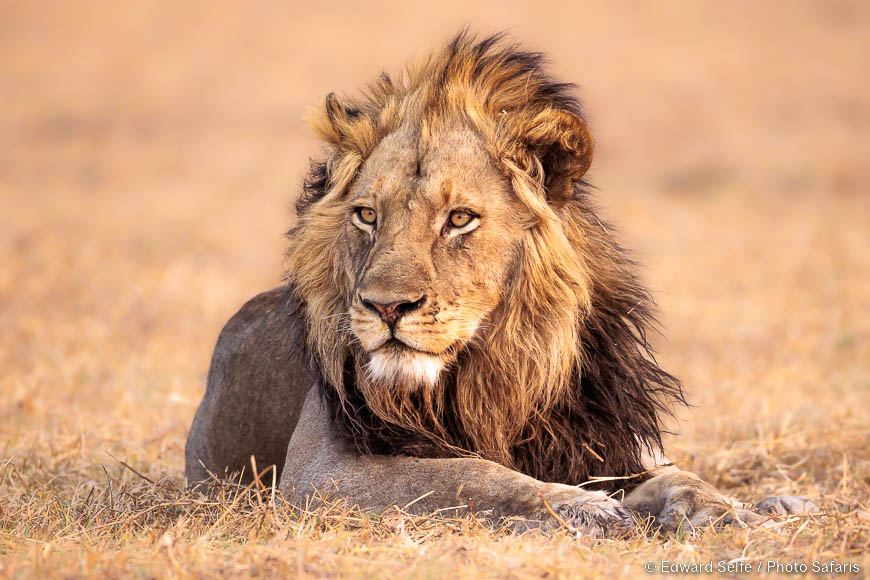
Early morning lion calls led us to search south of Shumba camp for source. Late in the afternoon, the culprits were found; two of the young males who had been chased off by the new males had returned and were lying around 400m from The General, who was still mating with the young female.
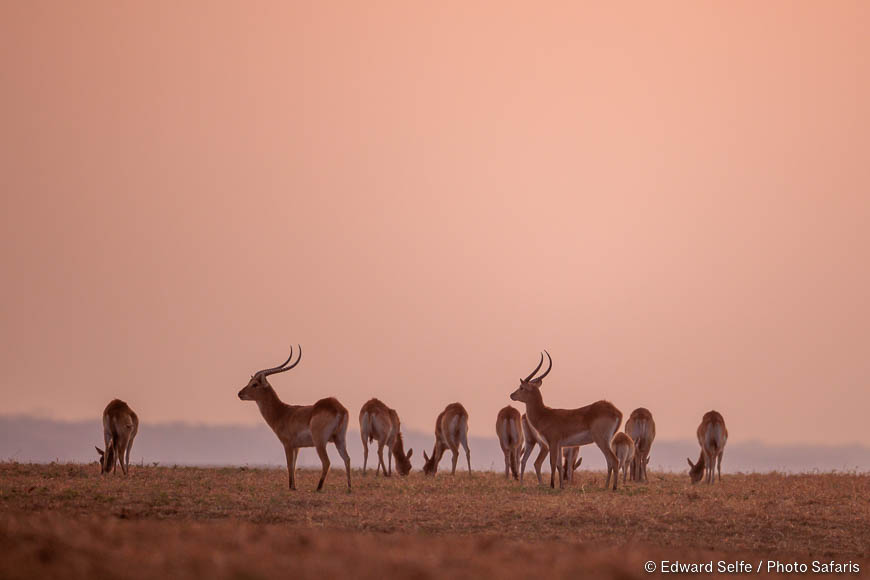
On our last morning in the north of the plains, we used the morning drive to transfer to Ntemwa-Busanga camp, where we would spend 3 nights. The light in the early morning was soft and pink…..
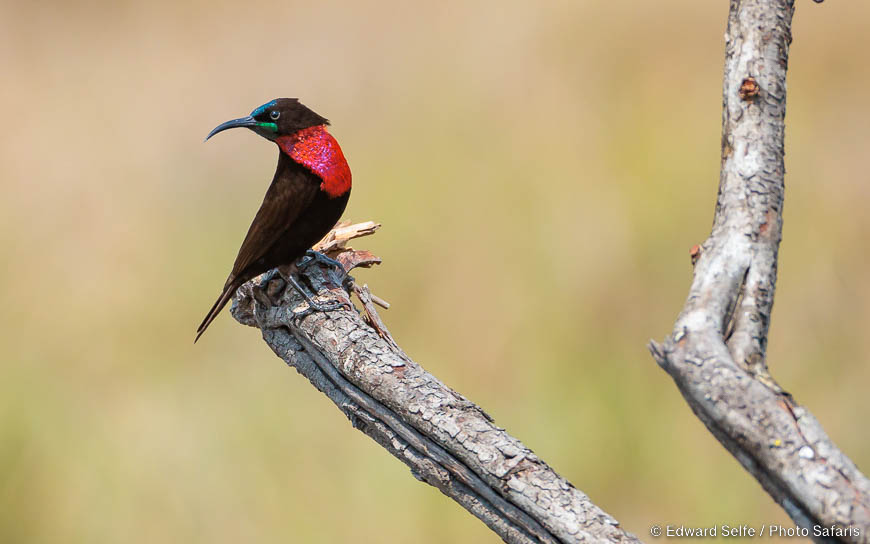
It was hot and sunny when we arrived at Ntemwa so we sat in the hide waiting for birds to come and visit the waterhole. First a scarlet-chested sunbird….
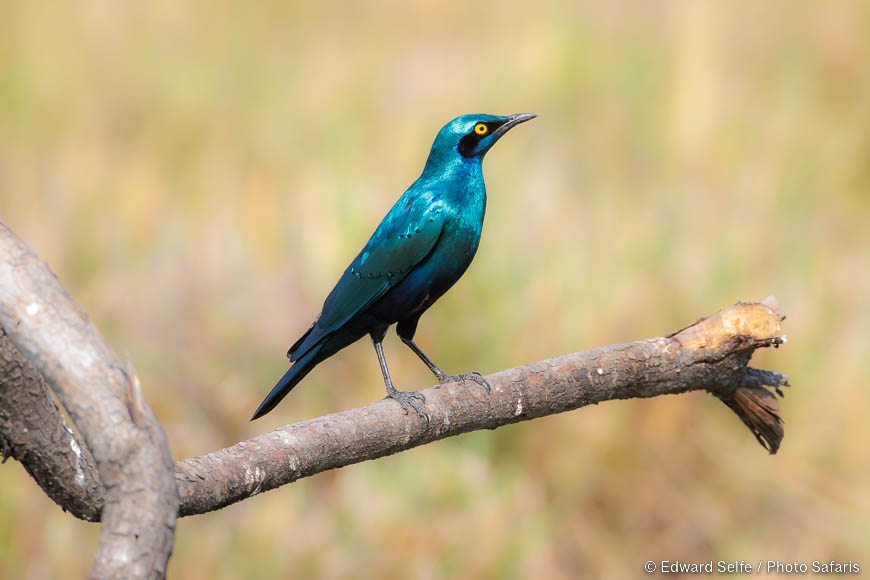
….and then a greater blue-eared starling arrived.
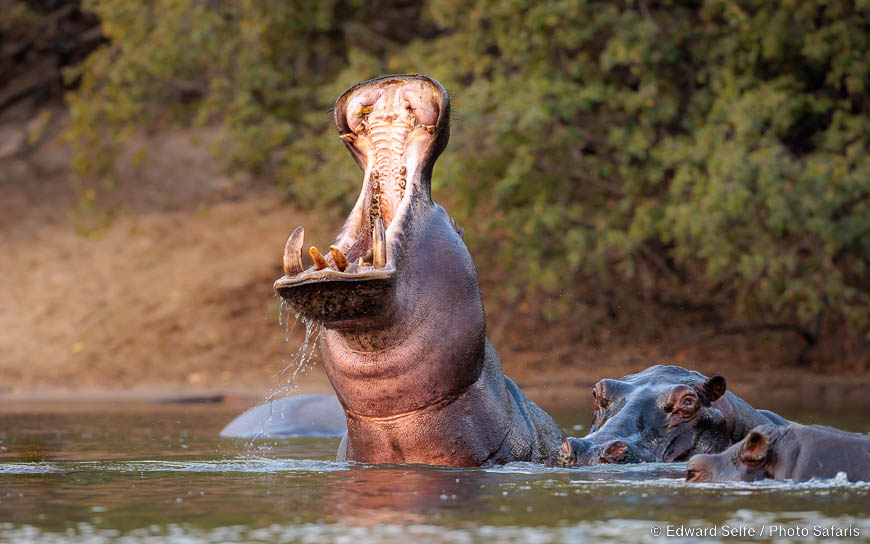
Our afternoon drive took us to a pool full of hippos south of the camp. They were uncharacteristically inactive, but a couple of bulls gave some displays that won’t quickly be forgotten.
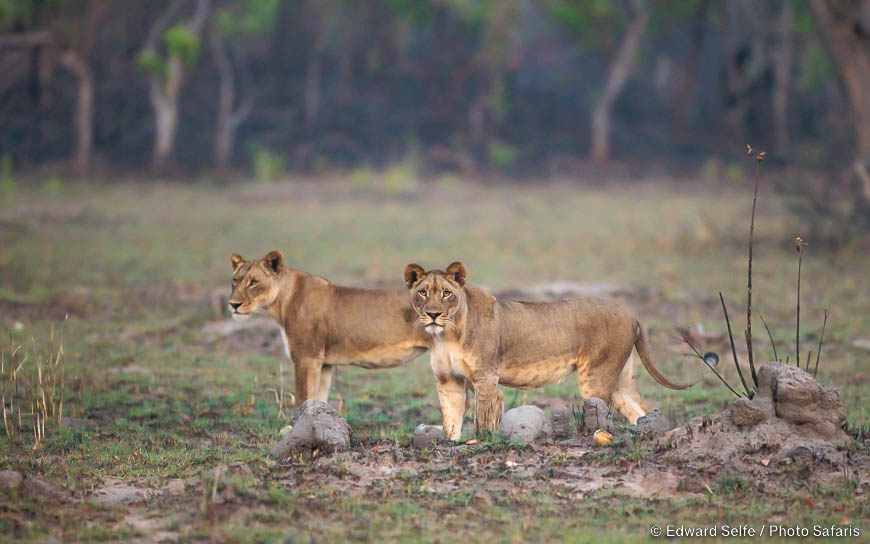
Leaving camp early the next day, I spotted a shape in the distance. It wasn’t moving but it seemed out of place. We stopped and I checked with my binoculars to reveal a lioness lying facing away from us. Checking around, I spotted two more, and our guide suggested that it was a female, with her two sub-adult cubs, which they often see in the area.
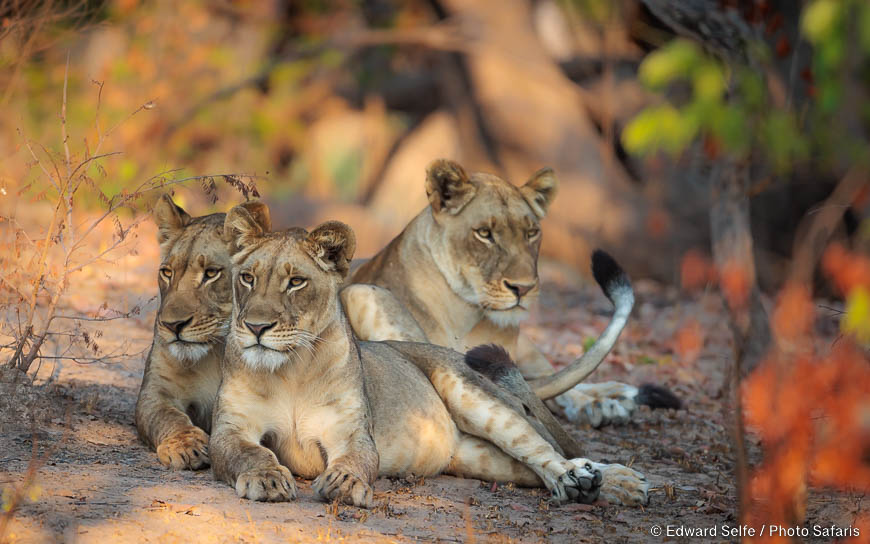
We had a spectacular time with them as they hunted for warthog, played and finally rested against a termite mound with beautiful autumnal leaves around them.
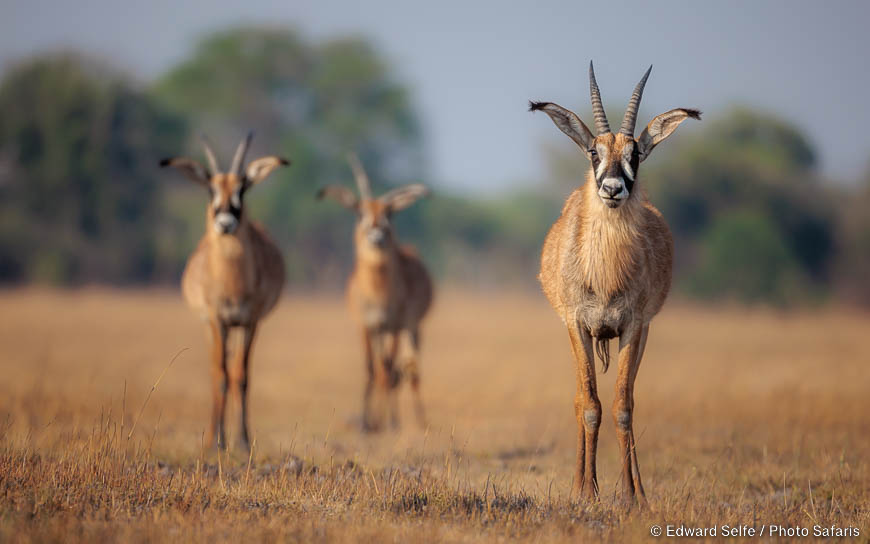
I have run this Kafue trip several times, and each time I realise again that I would not want to reduce the length or lose any of the time that we have in each camp. The Busanga plains is so large that, even though both the first two camps are in that area, they approach the place from different sides; the northern ares is known for its lechwe, waterbirds and deep channels, and the southern section (where Ntwema is sited) offers wonderful hippo, roan, sable and hartebeest sightings as well as the chance of cheetah too.
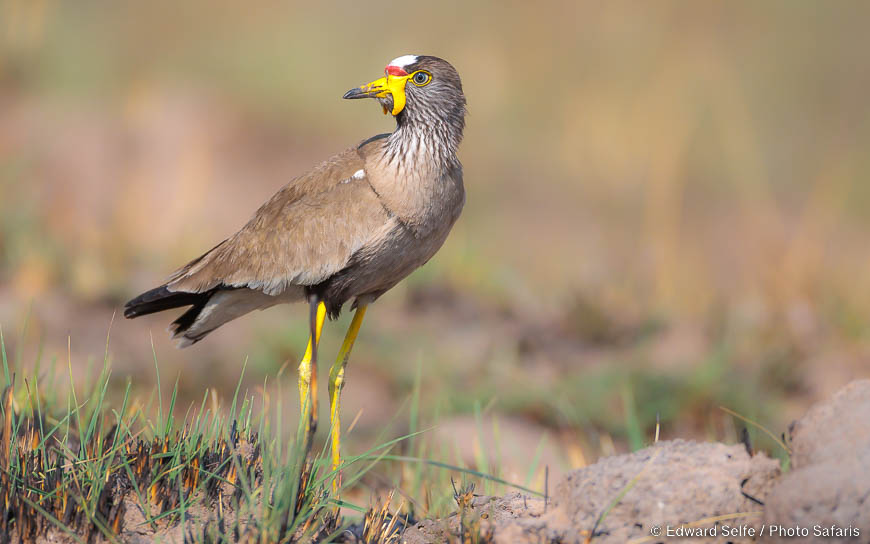
An African wattled lapwing guards its nest from intruders….
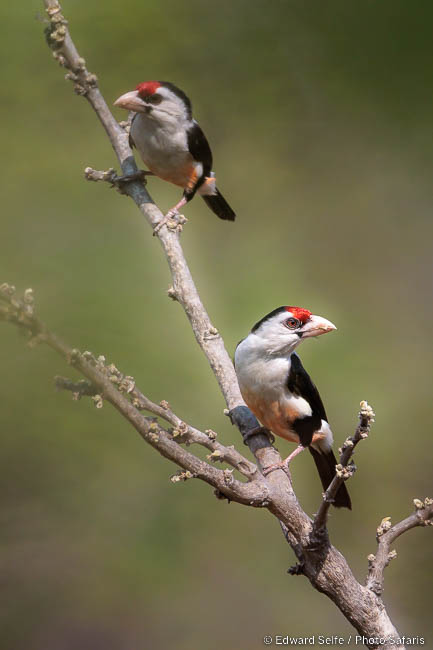
…and black-backed barbets gather at the Ntemwa waterhole.
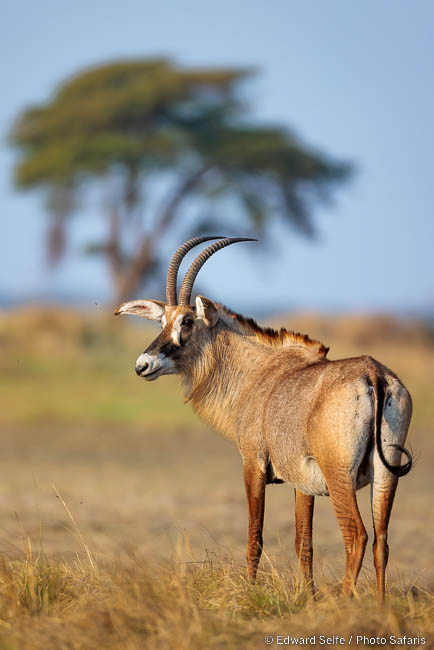
There is a patch of the floodplains which the guides call Paradise. There, once can find huge herds of roan, zebra and wildebeest and it was to this place that we headed one afternoon. The roan sightings were, predictably, wonderful….
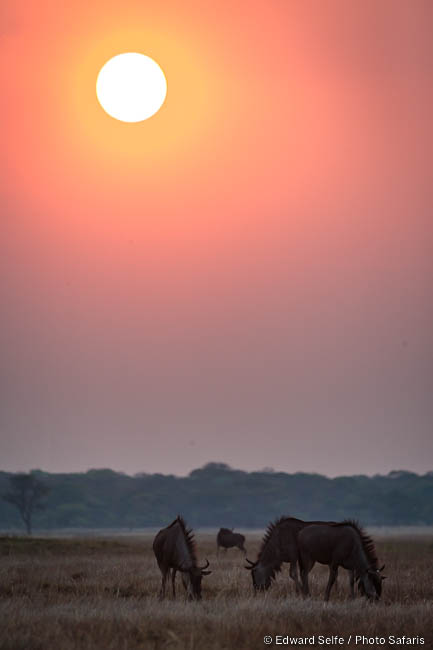
…but it was the chance to line up some wildebeest with the sunset that kept us busiest!
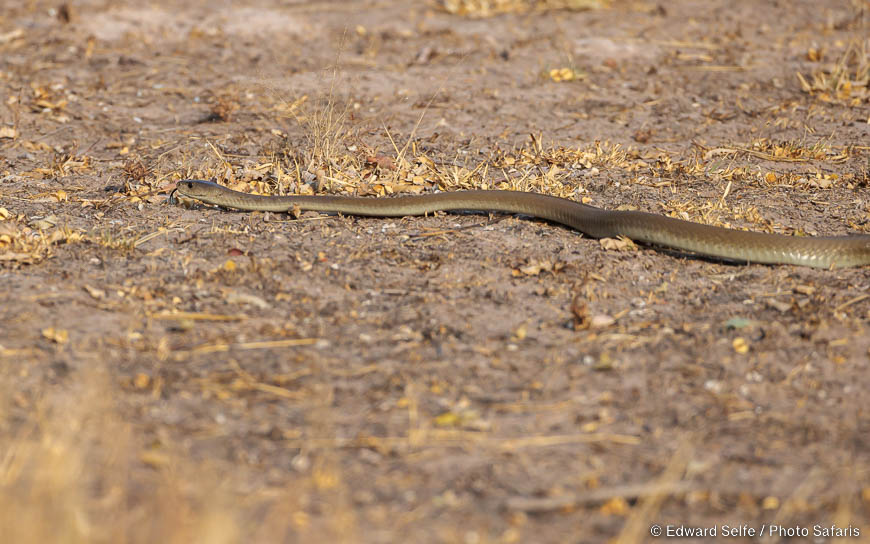
Perhaps our rarest sighting was this mamba which was sunbathing on the road and rushed away from us when it felt us approaching.
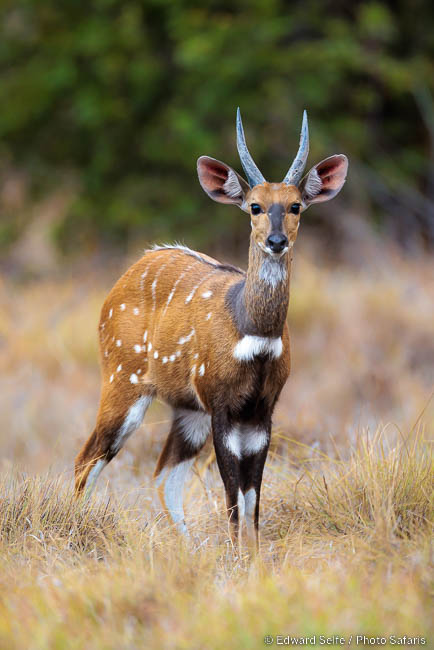
Back at the Ntemwa hide, it was not just birds which came to drink….
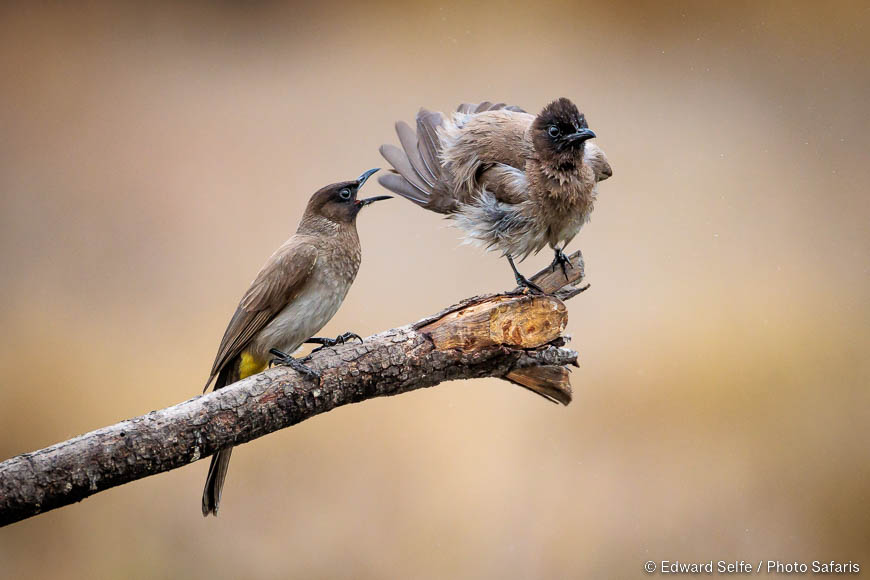
..and sometimes those bathing were irritating those waiting their turn!
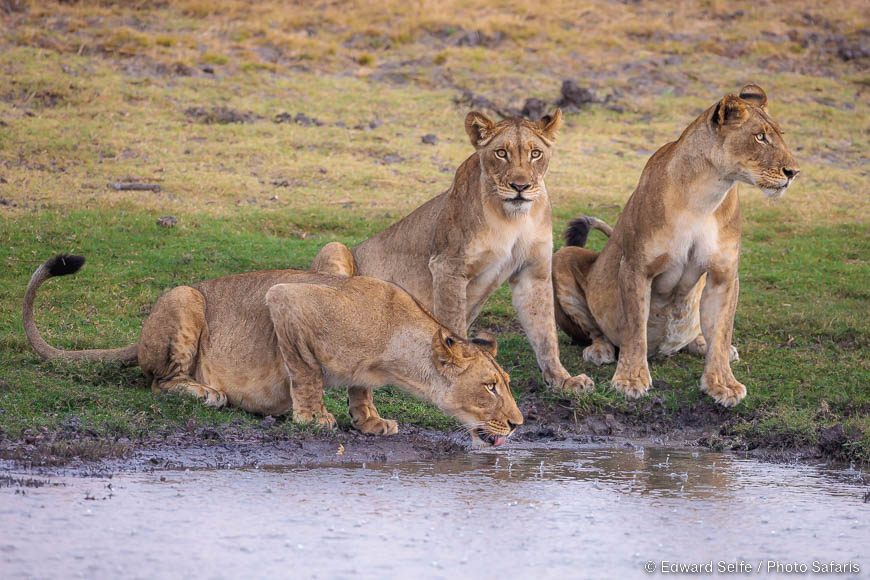
On our final afternoon in the Ntemwa area, we left camp with no plan, intentionally. We decided we would see what the bush gave us. As we moved along the treeline, many of the antelope were twitchy and it was soon clear that there was a predator around. A bit of scouting revealed the same 3 lionesses which we had seen two days before. Their bellies were full and they were on the move towards the water. I decided that we would give up shots of them moving through the grass and get ahead of them, cross the channel and shoot back at them across the water. It worked out perfectly….
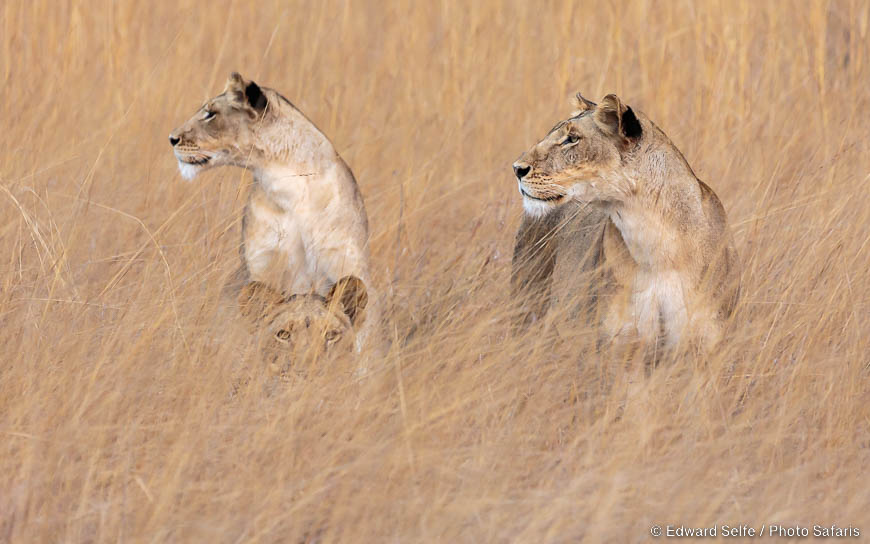
We spent the rest of the afternoon with them, watching them move through the grass, rest and socialise. A very memorable afternoon and a good advert for letting nature decidde the plan!
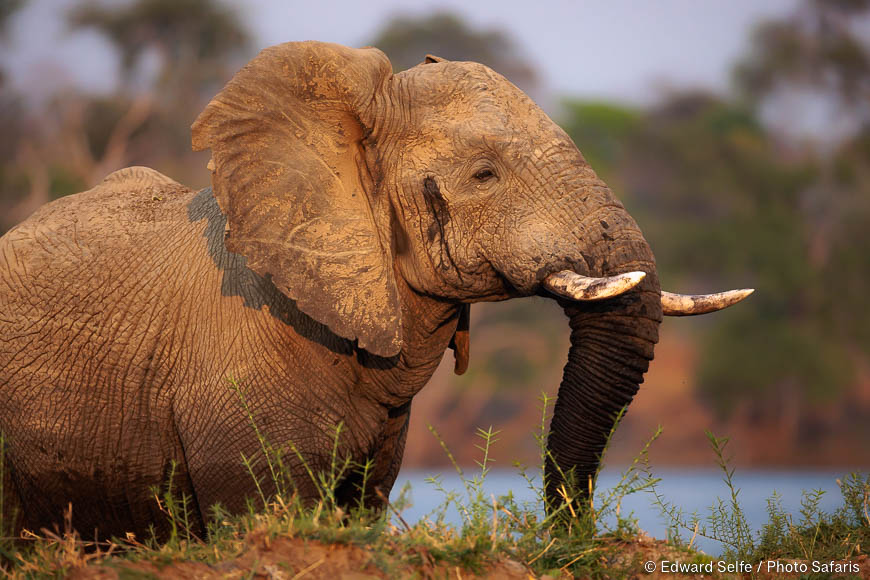
Ntemwa Camp had been fantastic and I must admit to being somewhat apprehensive about whether we could maintain the amazing pace of sightings that we had enjoyed so far. While we are at the mercy of Nature on any safari, I always take on myself the responsibility of the experience, so quiet days are a weight on my mind. I needn’t have worried, of course, as Musekese Camp turned out to be a great finale to the trip. We spent every afternoon on the boat, and our first afternoon was a very memorable one….finding this massive bull elephant….
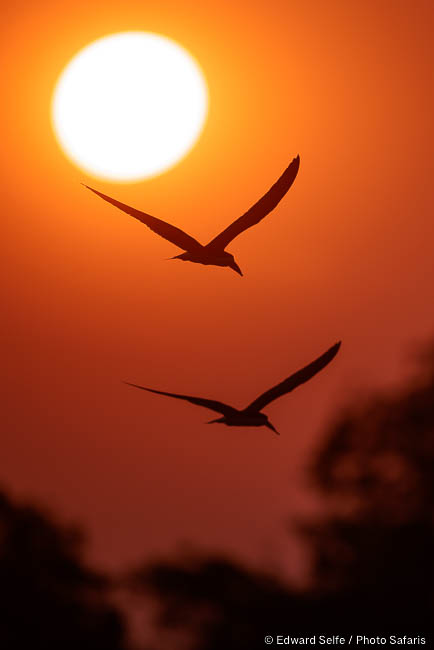
…and then spending the evening with the African skimmers which live on a small island in the middle of the river.
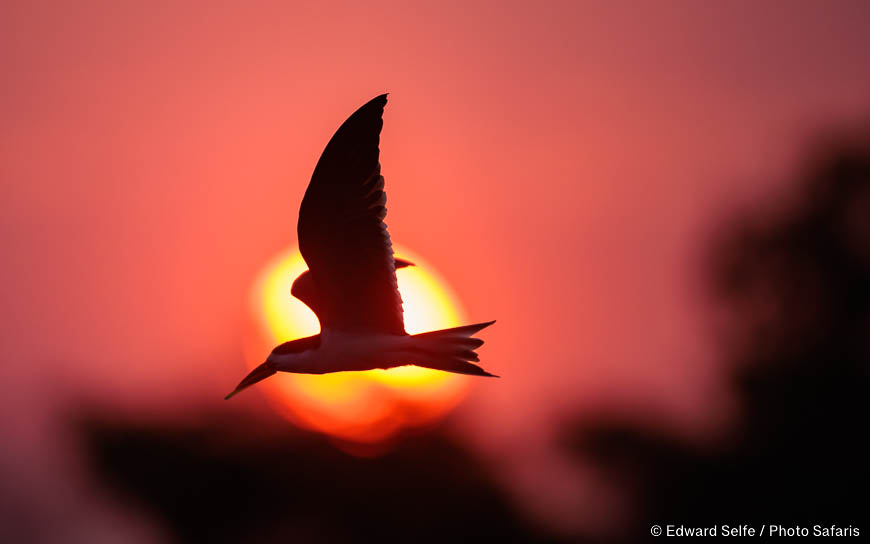
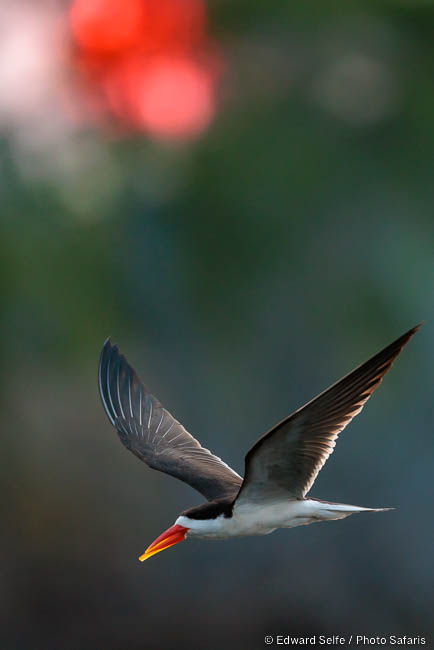
It was challenging photography, but I coached my guests to focus on a type of shot in a particular arc, and wait for the birds to fly into that arc. Keep shooting the same shot again and again until you capture the image you want, and then switch….
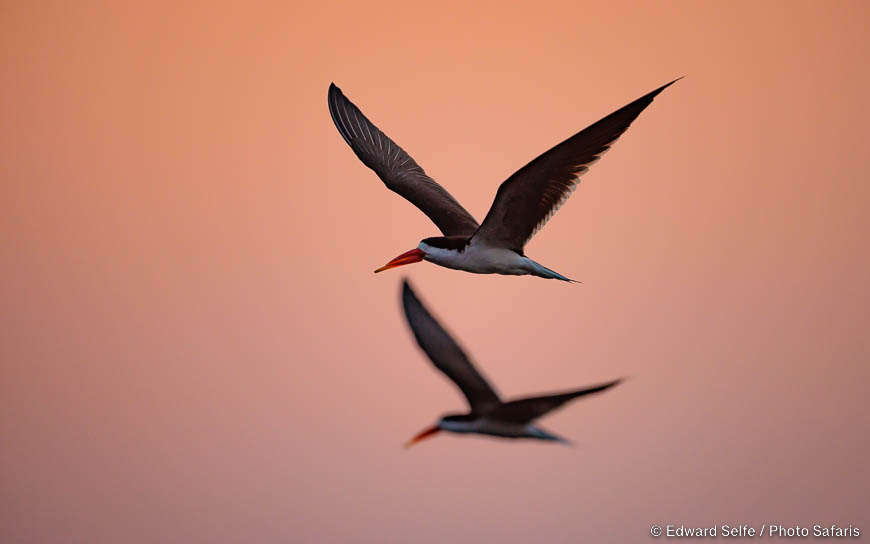
…to another arc, change camera settings, and shoot that situation until you nail the shot. Else, it’s easy to shoot madly in all directions at once and not have the correct camera settings for any of them!
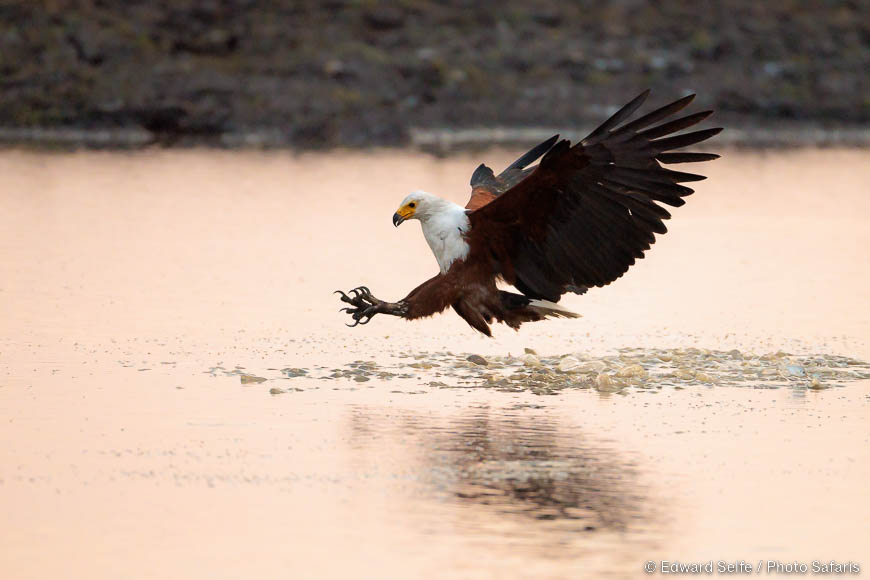
One morning, fish eagles were plucking small fish from the shallow water of a drying pond. It was amazing to see the way that the fish responded to the approaching bird, creating a boiling mass of bodies just below the surface in their attempts to evade capture.
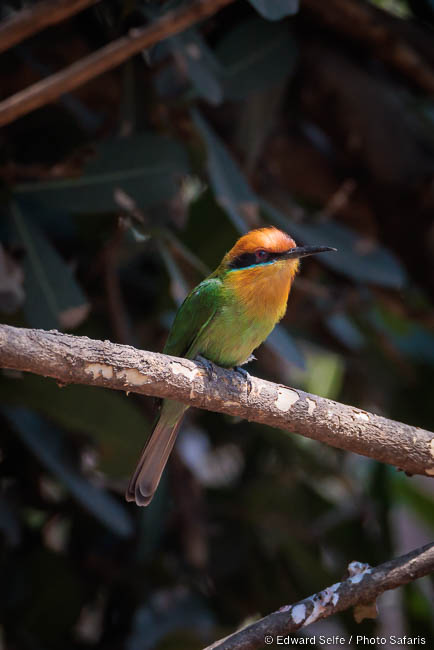
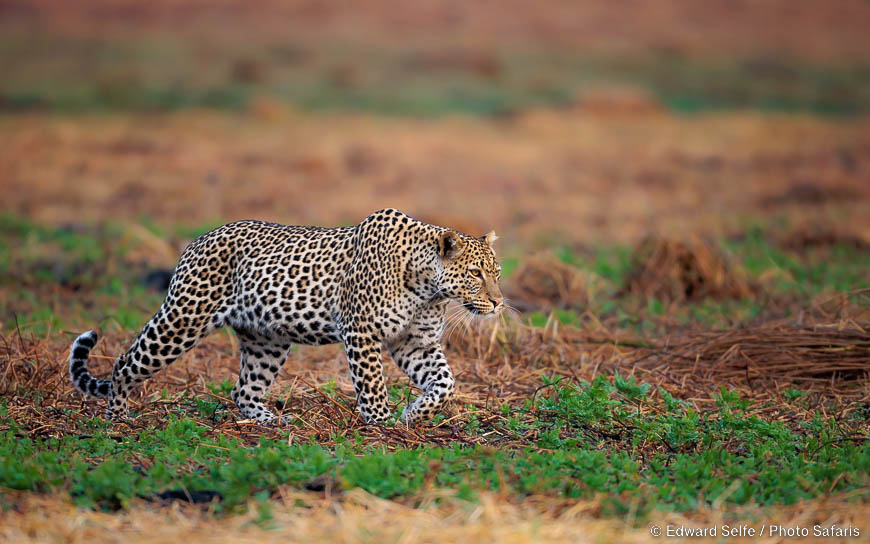
Musekese gave us the usual large dose of excellent leopard sightings….
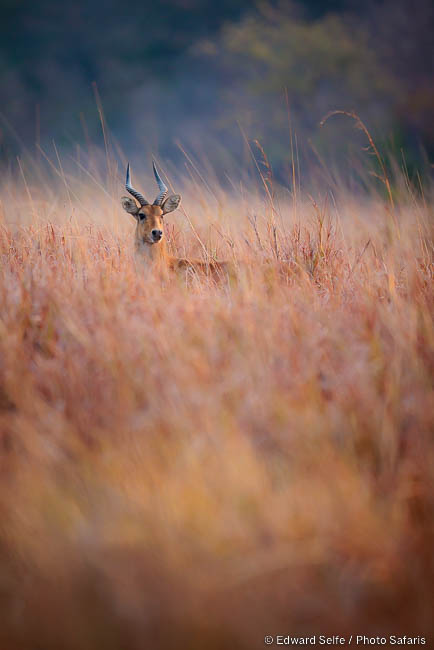
…and the beautiful opportunities to photograph antelope responding to their presence.
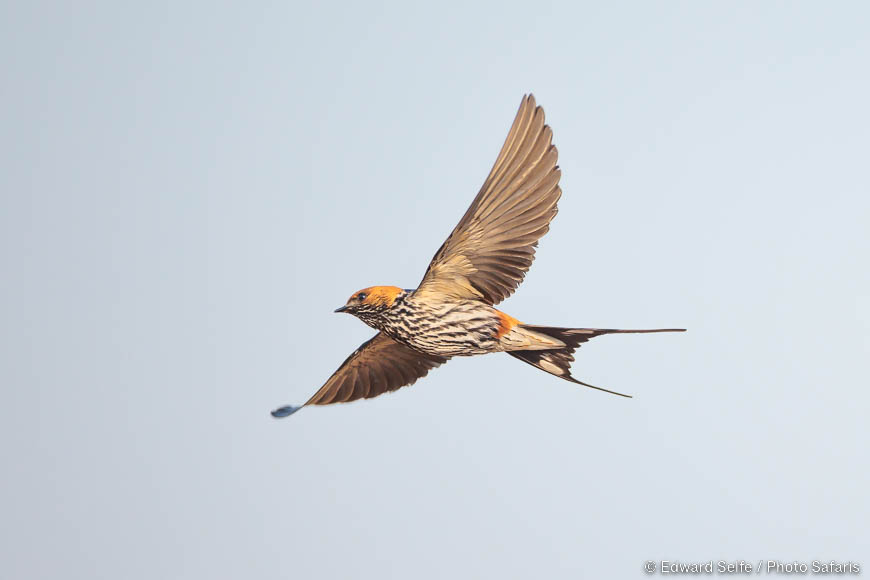
While we waited for a leopard one morning, I spent time playing with the R5’s AF system, and found it very effective at capturing swallows in flight…!
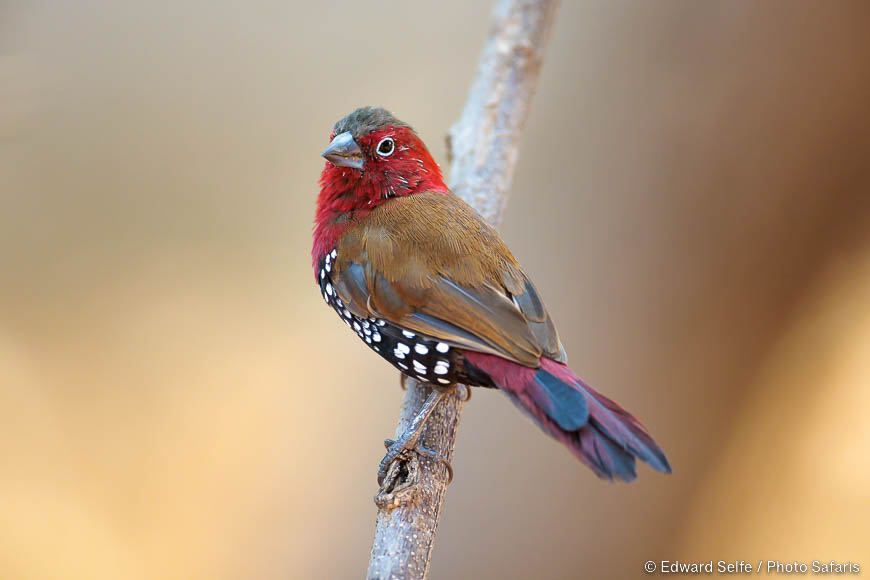
Generally the birding in the Kafue is excellent with lots of red-throated twinspots in the camp….
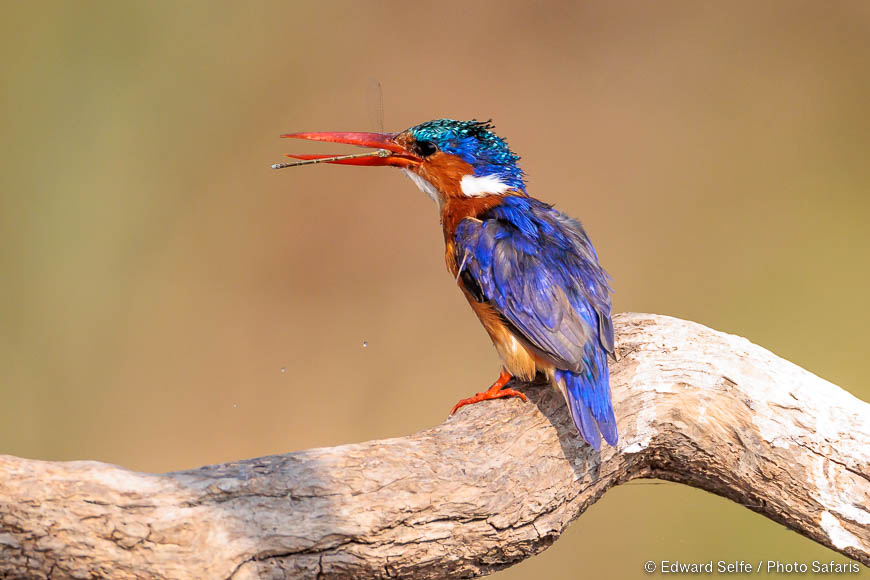
….malachite kingfishers on every boat outing…..
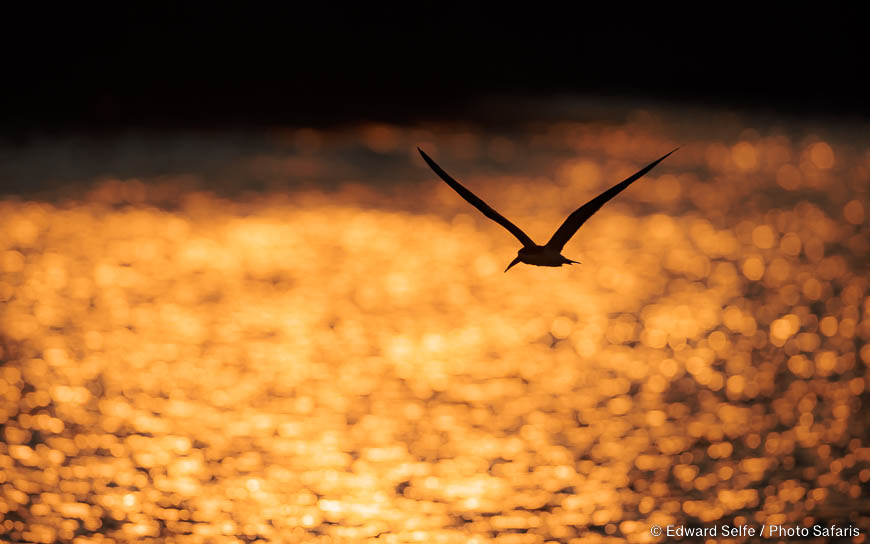
….and more chances with the skimmers on evening 3.
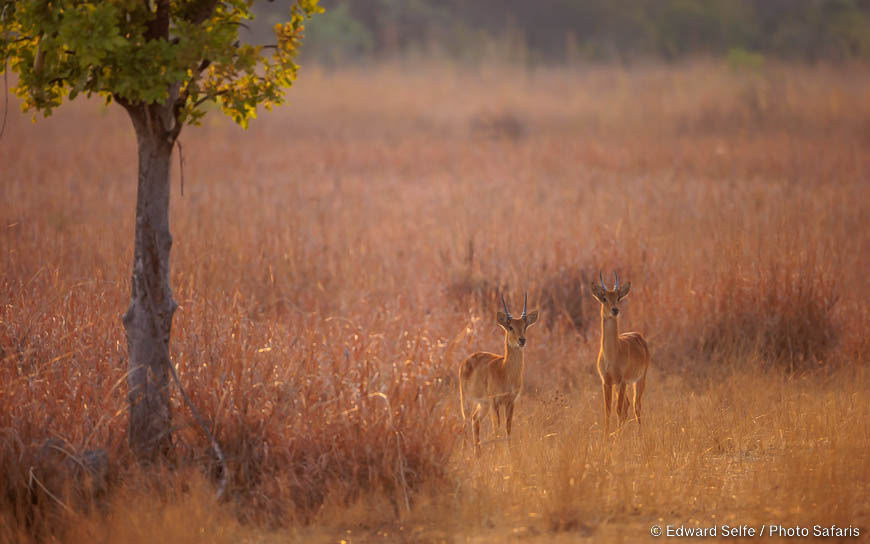
Taking a trip inland to another game rich area, we watched puku moving slowly – carefully – through their long grass home… We’d seen how easily leopards melt into this habitat so we could understand their caution.
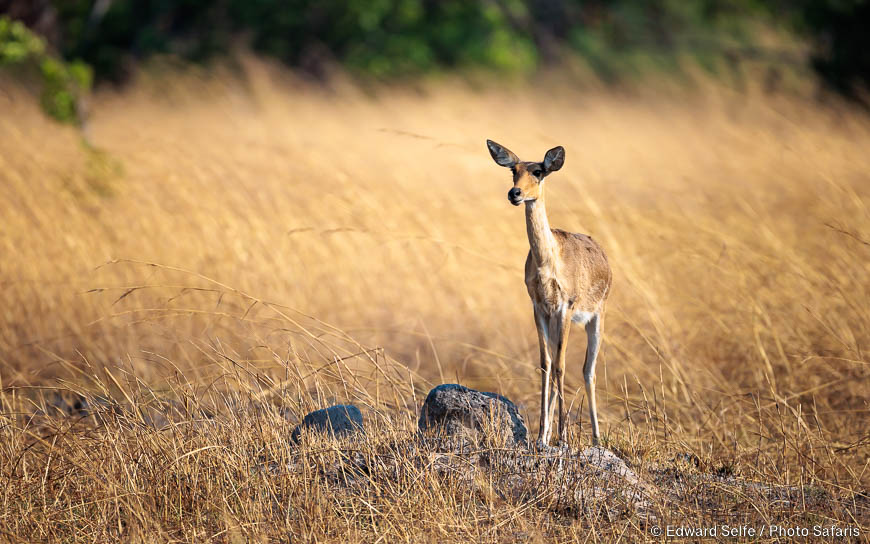
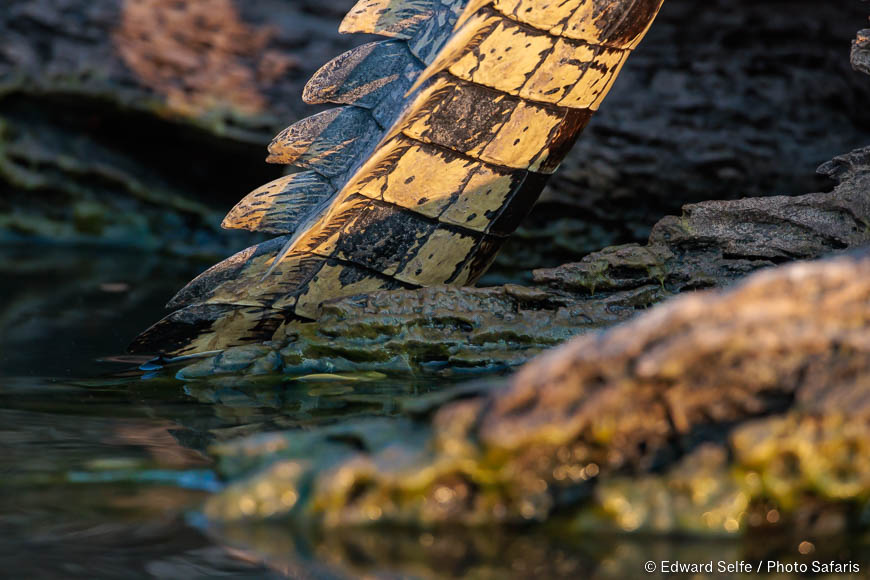
As I always hope for on our last day, it turned out to be a winner! Our last boat trip in the afternoon gave us some extraordinary encounters (which was remarkable considering we had already taken 4 outings on the boat!) including this crocodile which allowed us to drift ever closer. We could, eventually, make frame filling shots of just parts of its tail!
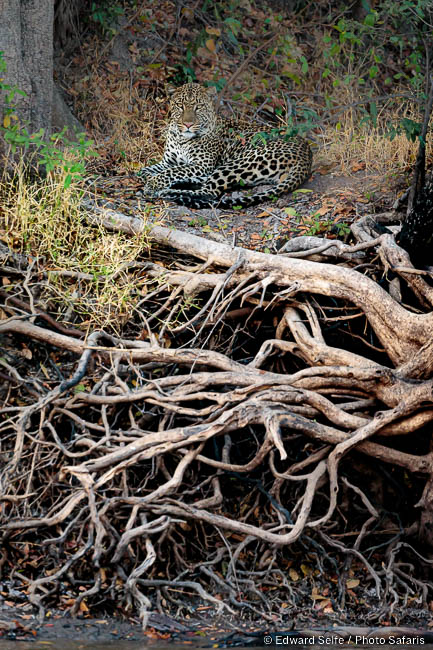
And, as we settled for a quiet drift on the river, Phil spotted a leopard resting in a spectacular spot on the bank! The root system below him added wonderful textures. Shooting wide enough to include the river at the bottom of the frame shows the context and the remarkable angle that being on the river affords.
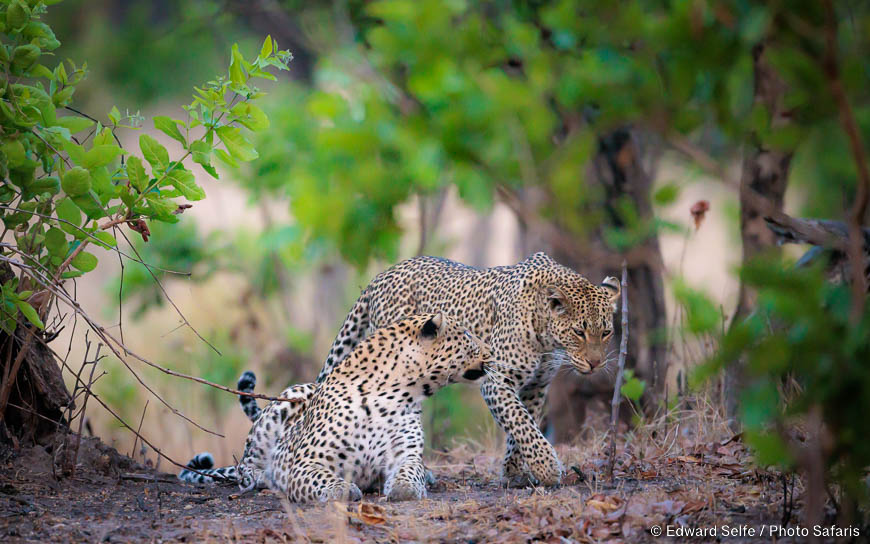
We set out early in search of lions on our last morning but it was a mating pair of leopards which stopped us dead in our tracks! What a spectacular sighting for our last morning. It was an odd coupling with the male appearing to be young and sometimes more playful that one might expect. But soon enough they settled into the rhythm and mating began.
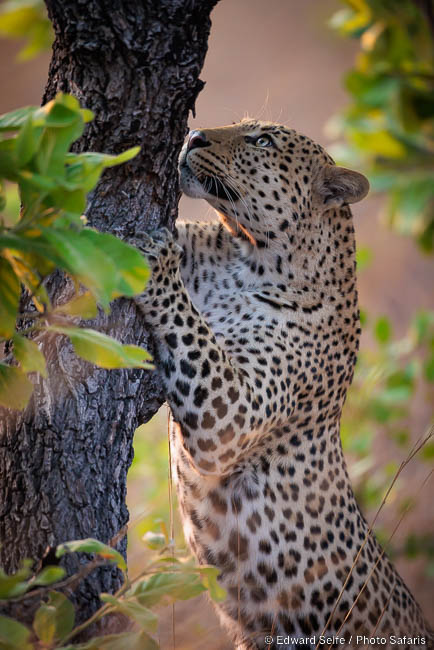
The grass was long and we had to be patient. Much of the time we had to trail them, trying not to lose them in the long grass, and wait until they emerged into small clearings.
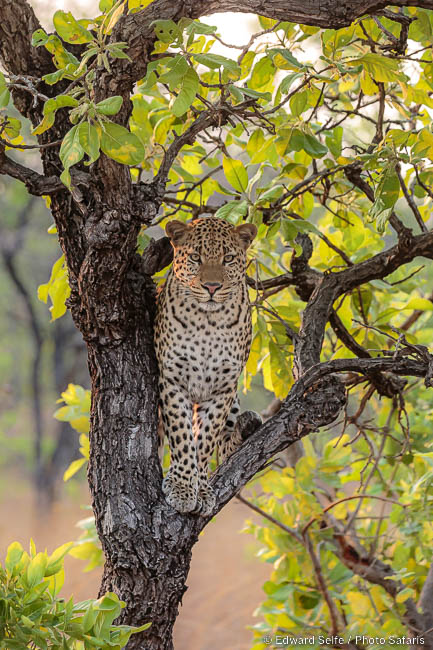
Inexplicably, the male suddenly turned, scented a tree and then jumped up into the first fork and turned towards us. He had no reason to do this except to check out the noisy thing that was following him through the grass. It turned out to be a young male who I had seen on a trip in Sep 2021 and he has certainly filled out in the intervening year!
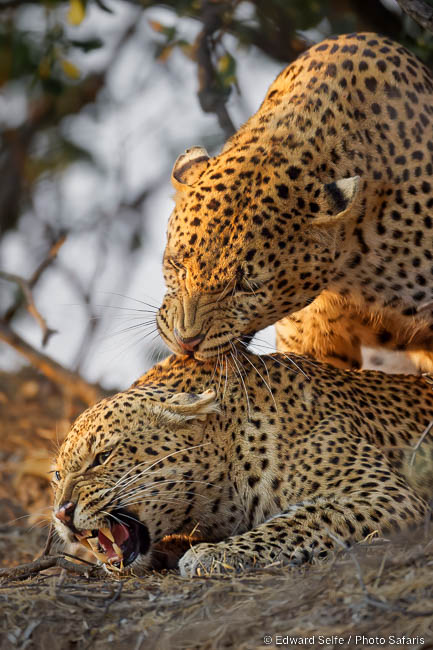
They mated several times, but always a little out of sight, and then the male scaled a termite mound and lay down. The female brushed past him, reversed and invited mating, and they did so, 10 meters from us, and 2 meters above our heads! Just spectacular!
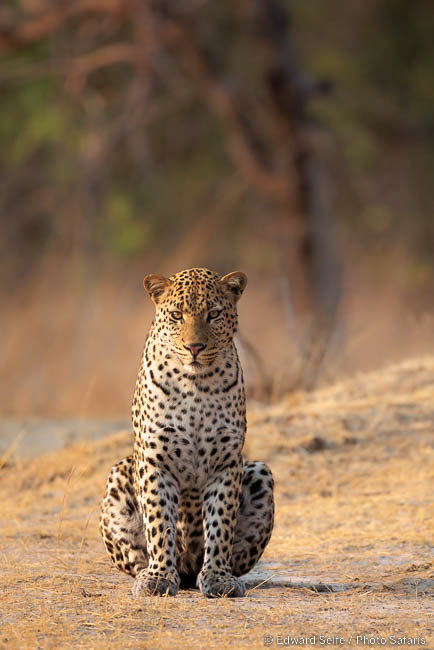
They crossed the road, descended into the long grass and settled down. We lost sight of them at this point and decided not to try to follow. However, we did get on the boat and cruise up to the spot where we’d left them in case they had emerged on to the river bank. Sadly they hadn’t but we could hardly complain given the amazing experience we had shared with them!
Once again, we had enjoyed a world-class trip in the Kafue. There are several images from this safari which will make it into my top-100 portfolio, ousting past favourites. Kafue is wild and sometimes harder work than the ‘easier’ game viewing of the Valleys, but the privacy to be enjoyed on sightings and the ability to manage these totally for your own ends is extremely precious in a safari world that is increasingly oversubscribed and characterised by the 3 day in-out safari tourism. Long may the Kafue, which has recently come under the management of African Parks, offer something different and special.
If you would like to travel to Kafue with me in 2023, please get in touch. I am working on plans for a July trip now.


